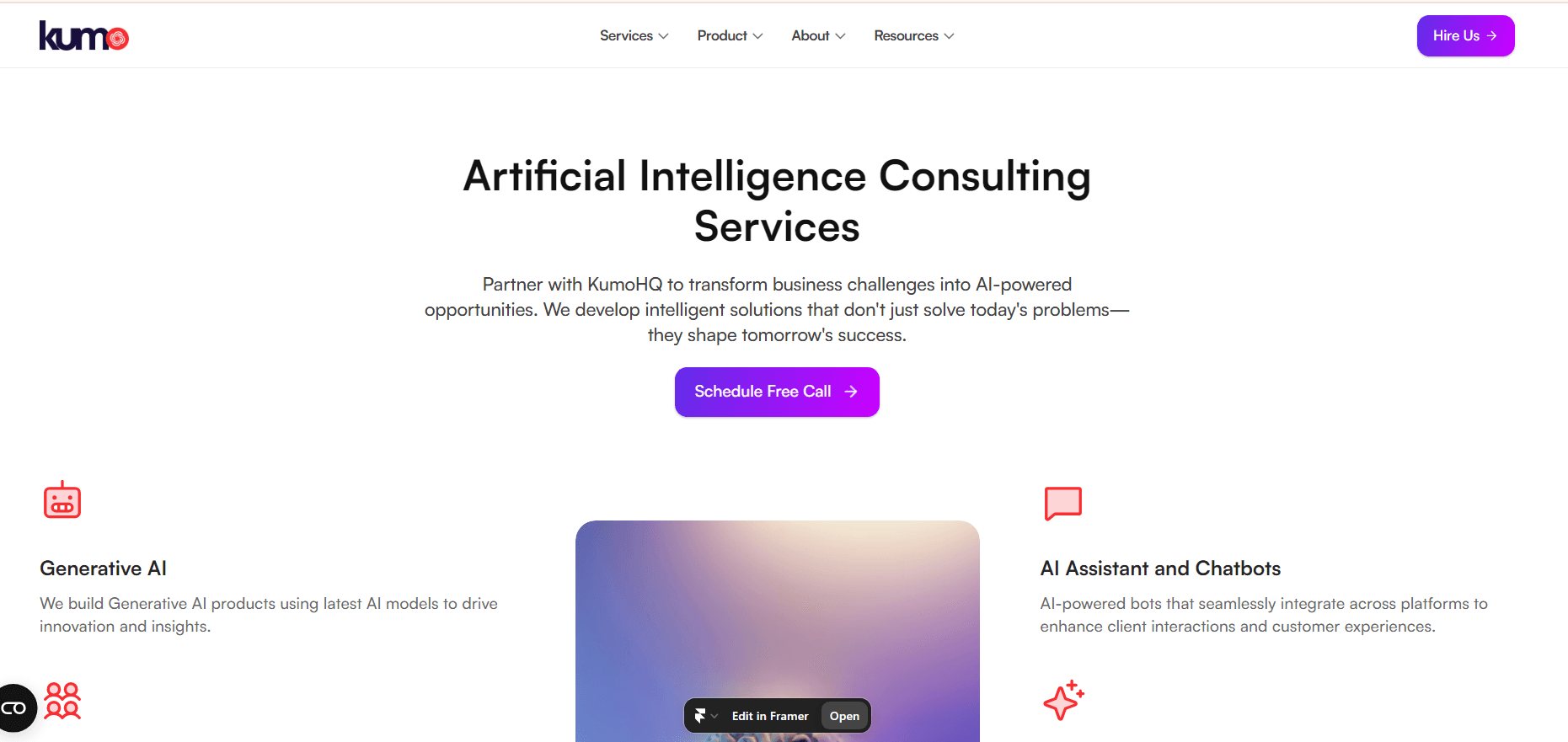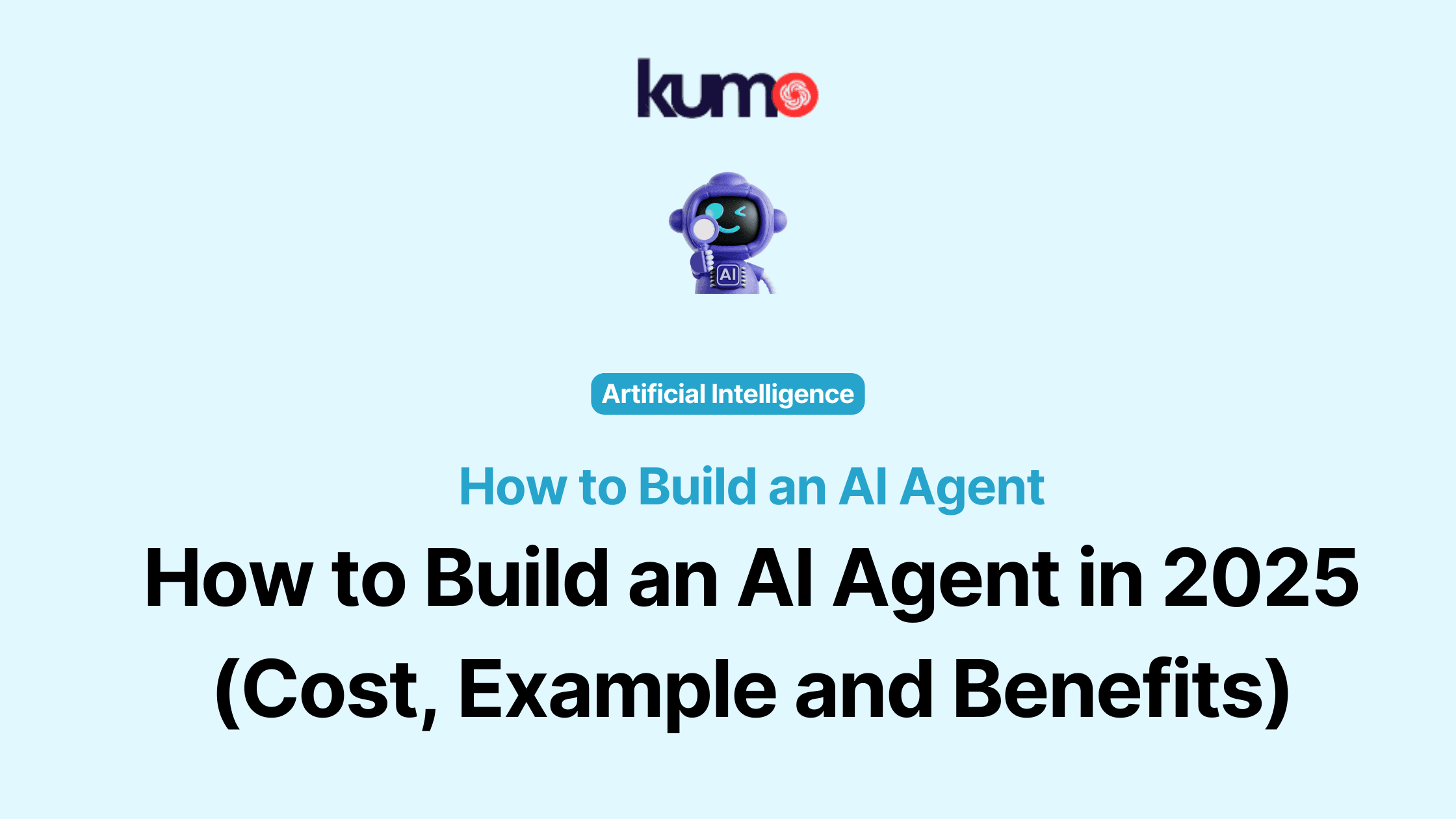How to Build an AI Agent in 2025 (Cost, Example and Benefits)
A beginner tutorial showing you how to make a website from scratch. Starting from a blank Canvas.
February 14, 2025
Artificial Intelligence
AI agents have become vital tools that stimulate business growth in companies of all sizes. These intelligent assistants reshape the way we work by managing emails and scheduling appointments.
AI agents now understand human language and remain available to anyone who owns a computer. Building an AI agent makes perfect sense for businesses that want to streamline customer service, boost sales support, or improve HR operations.
Building AI agents requires several steps from data collection and model training to deployment. The process might look complex, but you'll find it easier when broken down into simple, applicable steps.
Want to create your own AI agent? Let's take a closer look at the costs, implementation, and ground benefits you need to know.
What is an AI agent?
AI agents are software programs that work on their own by creating workflows and using available tools. These agents act like rational decision-makers and use their understanding of data to deliver the best results.
Large language models (LLMs) power these AI agents and help them understand natural language. They can work with text, voice, video, and code all at once.
The AI agent market hit USD 3.86 billion in 2023, and experts predict a soaring 45.1% yearly growth from 2024 to 2030. Three main factors drive this growth:
Rising just need for automation
Advances in Natural Language Processing
Push for customized customer experiences
AI agents stand out from regular chatbots because of their advanced features. They remember past conversations and can plan ahead to create a customized experience. They also connect to external tools like databases, APIs, and web services to expand what they know and can do.
Microsoft's business operations have improved thanks to AI agents. Employee IT self-help success jumped by 36% while revenue per seller grew by 9.4%. These agents shine when handling complex tasks like supply chain management, content curation automation, and career development support.
Understanding the basics of building AI agents
AI agents need three basic components that work together to create intelligent systems. These fundamental elements are the building blocks of AI agent development.
Data labeling
Data labeling is the life-blood of AI agent development. The process matches raw data with meaningful labels to give context to machine learning models. Data labeling supports many use cases, from computer vision to speech recognition. Your trained model's accuracy depends on the quality of ground truth - the labeled dataset that serves as the objective standard.
Machine Learning
Machine Learning enables AI agents to learn and improve from experience without explicit programming. Agents use historical data to spot patterns and make informed decisions. AI agents use several types of learning mechanisms:
Supervised learning: Learning from labeled examples
Unsupervised learning: Finding patterns in unlabeled data
Reinforcement learning: Learning through trial and error and feedback
Natural Language Processing (NLP)
Natural Language Processing helps AI agents understand, interpret, and generate human-like text. NLP turns text and audio into logical forms that machines can process. These key components make this possible:
Text Analysis: Breaking down content into manageable parts
Tokenization: Dividing text into meaningful elements
Named Entity Recognition: Detecting key entities like names and locations
Sentiment Analysis: Determining emotional tone in text
These three components create AI agents that understand complex environments and make rational decisions when they work together. AI agents now handle customer support questions with human-like understanding and assist doctors with treatment recommendations in healthcare.
Step-by-Step Guide to Building an AI Agent
A structured approach helps you develop successful AI agents. Here's a detailed look at each vital step.
1. Define the agent's purpose
Your AI agent needs clear goals that match your business needs. You should identify specific tasks and success metrics that your agent will target.
2. Select development approach
You can choose between custom development or low-code platforms based on your team's skills. The options include framework-agnostic approaches that support build environments of all types and visual interfaces that speed up development.
3. Design conversation flows
We focused on creating simple language patterns for the AI agent. Your agent should mirror user questions and keep messages short and focused. Each response should handle one action to maintain clarity.
4. Add tools and integrations
Tools let AI agents work with external systems and grow their capabilities. You need to combine APIs, databases, and third-party applications smoothly to boost functionality. These additions help agents access real-time data and complete complex tasks on their own.
5. Test and refine
You should set up reliable testing protocols early.
This includes:
Unit testing for individual modules
Integration testing for system compatibility
Functional testing for use case validation
Performance checks against standards
6. Deploy and monitor
Deploy your AI agent in the business environment after testing succeeds. Set up systems that track performance metrics and collect user feedback continuously. Regular updates based on performance data help your agent work well and match changing business goals.
Real Costs of Building an AI Agent
A proper budget plan needs a clear understanding of the financial investment in AI agent development. The global AI agents market was valued at USD 3.66 billion in 2023 and experts project it will reach USD 139.12 billion by 2033.
Development costs breakdown
You need USD 6,000 to USD 300,000 as your original investment for AI agent development. The final cost depends on complexity and features. A simple custom virtual assistant costs about $35k because it needs minimal testing and simpler technologies.
Enterprise-level implementations come with these typical costs:

Data requirements, infrastructure needs, and team composition are the foundations of development costs. Cloud computing expenses can hit $40K yearly, especially when using NVIDIA's A100 GPU on AWS.
Ongoing maintenance expenses
AI agents need continuous investment for maintenance. The yearly maintenance costs are usually 15-20% of the original development cost. These costs include:
Regular model updates and retraining
Performance monitoring systems
Security compliance measures
Data storage and processing
Data labeling services are a great way to get quality data but cost between $1K to $10K per 1,000 labels. Gartner's analysis shows all but one of these CIOs struggle to manage AI costs as vendors raise their prices.
Companies can make use of information from cloud-based solutions that offer flexible pricing models. This approach helps move costs from capital expenditure to operational expenditure and enables more predictable financial planning.
Success Story: Building a Customer Service Agent
Klarna, a leading global payments provider, shows how AI agents can transform customer service operations. The company wanted to boost its support operations with an advanced AI-powered system that handles customer questions effectively.
Project overview and goals
The company built an AI agent to manage customer service questions about refunds, returns, payments, and cancelations in 35 languages. Their system needed to keep satisfaction scores high while bringing response times down to under two minutes.
Implementation steps
The project moved through several key phases:
Integration with existing knowledge bases
Development of multilingual capabilities
Creation of automated response systems
Implementation of performance monitoring tools
The AI agent learned to process complex queries and naturally pass issues to human agents when needed.
Results and ROI
Klarna's AI agent brought impressive results:

This project demonstrates AI agents' value in customer service. Klarna's careful planning created a system that handles high volumes of questions while matching human support quality standards.
Build and train your own AI agent with Kumo

Kumo is a robust platform that builds AI agents directly on relational data without extensive coding or feature engineering. Developers can create and deploy cutting-edge AI models in minutes using its SQL-like Predictive Querying Language.
The platform processes up to 50 billion data points and handles complex data relationships exceptionally well. Kumo automatically builds a graph from your relational data once connected to your data source. It then applies graph-based deep learning for predictive and embedding models.

The platform now supports multiple deployment options such as SaaS, Snowflake Native App, and Databricks Lakehouse App. Its training process uses advanced time-based data partitioning. The system splits holdout data for future predictions and validation data for model testing.
Kumo's neural architecture search finds optimal configurations for graph neural networks automatically, which makes development much smoother. Companies looking to implement AI solutions will find Kumo's helpful for monitoring metrics, analyzing timeframe statistics, and checking model performance.
Conclusion
AI agents are powerful tools that transform business operations through automation, customized customer experiences, and better decision-making capabilities. Data labeling, machine learning, and natural language processing work together to create intelligent systems. These systems can handle complex tasks on their own.
A successful AI agent needs careful planning. You must define clear objectives and select the right development approaches. The costs depend on complexity and scale. Businesses that want to stay competitive in 2025 and beyond will find this a valuable investment.
Companies like Kumo show the real-life effect of AI agents. They achieved remarkable improvements in customer service metrics and streamlined processes. These results show that properly implemented AI agents create measurable business value.
Kumo makes building AI agents easier with its trailblazing platform. Businesses can create sophisticated solutions without extensive coding knowledge.
Do you want to build your own AI agent? Contact our team to get expert guidance on AI solutions that fit your business needs.
FAQ
Let's tackle some common questions about AI agents and their development in 2025.
How to build an AI agent with ChatGPT
GPT models are the foundations of building AI agents with ChatGPT. We used these models because they excel at understanding context and generating human-like text. To cite an instance, tools like Aider show practical implementation by working as an AI pair programmer that integrates with GPT-4 or Claude 3.5 to help developers in their git repositories.
Best AI agent builder
Many platforms have altered the map of AI agent development. Kumo provides an easy-to-use interface that works great for beginners. Gumloop delivers powerful no-code AI workflows, while Lindy.ai focuses on automating daily tasks.
How do I create my own AI?
Your AI creation journey starts with a clear purpose and relevant data collection. Here's what you need to do:
Choose a suitable AI framework
Design the architecture
Implement required algorithms
Train and test the agent
Integrate with necessary interfaces
Is ChatGPT an AI agent?
ChatGPT works as a co-pilot or assistant rather than a true AI agent. It doesn't work independently or take actions on its own, unlike full AI agents. True AI agents can pursue goals on their own, plan multi-step actions, and connect with external systems.
